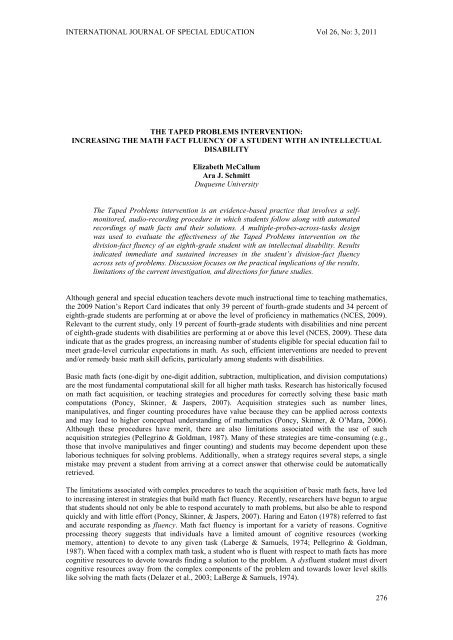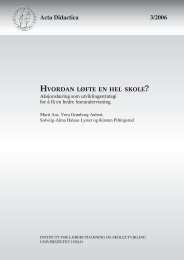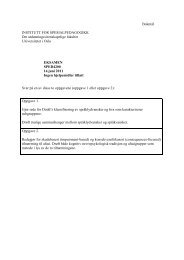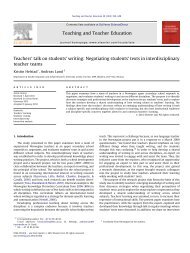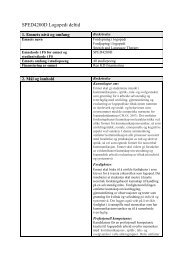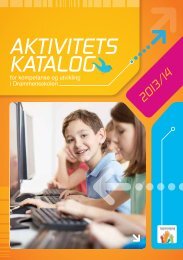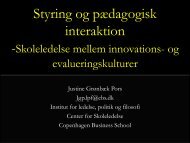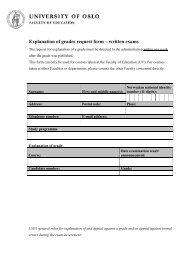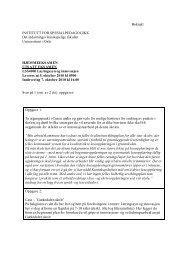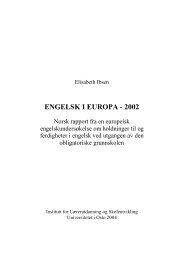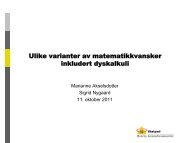International Journal Special Education
International Journal Special Education
International Journal Special Education
You also want an ePaper? Increase the reach of your titles
YUMPU automatically turns print PDFs into web optimized ePapers that Google loves.
INTERNATIONAL JOURNAL OF SPECIAL EDUCATION Vol 26, No: 3, 2011THE TAPED PROBLEMS INTERVENTION:INCREASING THE MATH FACT FLUENCY OF A STUDENT WITH AN INTELLECTUALDISABILITYElizabeth McCallumAra J. SchmittDuquesne UniversityThe Taped Problems intervention is an evidence-based practice that involves a selfmonitored,audio-recording procedure in which students follow along with automatedrecordings of math facts and their solutions. A multiple-probes-across-tasks designwas used to evaluate the effectiveness of the Taped Problems intervention on thedivision-fact fluency of an eighth-grade student with an intellectual disability. Resultsindicated immediate and sustained increases in the student’s division-fact fluencyacross sets of problems. Discussion focuses on the practical implications of the results,limitations of the current investigation, and directions for future studies.Although general and special education teachers devote much instructional time to teaching mathematics,the 2009 Nation’s Report Card indicates that only 39 percent of fourth-grade students and 34 percent ofeighth-grade students are performing at or above the level of proficiency in mathematics (NCES, 2009).Relevant to the current study, only 19 percent of fourth-grade students with disabilities and nine percentof eighth-grade students with disabilities are performing at or above this level (NCES, 2009). These dataindicate that as the grades progress, an increasing number of students eligible for special education fail tomeet grade-level curricular expectations in math. As such, efficient interventions are needed to preventand/or remedy basic math skill deficits, particularly among students with disabilities.Basic math facts (one-digit by one-digit addition, subtraction, multiplication, and division computations)are the most fundamental computational skill for all higher math tasks. Research has historically focusedon math fact acquisition, or teaching strategies and procedures for correctly solving these basic mathcomputations (Poncy, Skinner, & Jaspers, 2007). Acquisition strategies such as number lines,manipulatives, and finger counting procedures have value because they can be applied across contextsand may lead to higher conceptual understanding of mathematics (Poncy, Skinner, & O’Mara, 2006).Although these procedures have merit, there are also limitations associated with the use of suchacquisition strategies (Pellegrino & Goldman, 1987). Many of these strategies are time-consuming (e.g.,those that involve manipulatives and finger counting) and students may become dependent upon theselaborious techniques for solving problems. Additionally, when a strategy requires several steps, a singlemistake may prevent a student from arriving at a correct answer that otherwise could be automaticallyretrieved.The limitations associated with complex procedures to teach the acquisition of basic math facts, have ledto increasing interest in strategies that build math fact fluency. Recently, researchers have begun to arguethat students should not only be able to respond accurately to math problems, but also be able to respondquickly and with little effort (Poncy, Skinner, & Jaspers, 2007). Haring and Eaton (1978) referred to fastand accurate responding as fluency. Math fact fluency is important for a variety of reasons. Cognitiveprocessing theory suggests that individuals have a limited amount of cognitive resources (workingmemory, attention) to devote to any given task (Laberge & Samuels, 1974; Pellegrino & Goldman,1987). When faced with a complex math task, a student who is fluent with respect to math facts has morecognitive resources to devote towards finding a solution to the problem. A dysfluent student must divertcognitive resources away from the complex components of the problem and towards lower level skillslike solving the math facts (Delazer et al., 2003; LaBerge & Samuels, 1974).276


